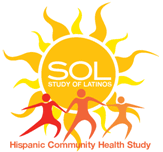| Title | Sedentary time and peripheral artery disease: The Hispanic Community Health Study/Study of Latinos. |
| Publication Type | Publication |
| Year | 2020 |
| Authors | Unkart JT, Allison MA, Parada H, Criqui MH, Qi Q, Diaz KM, Carlson JA, Sotres-Alvarez D, Ostfeld RJ, Raij L, Bellettiere J |
| Journal | Am Heart J |
| Volume | 222 |
| Pagination | 208-219 |
| Date Published | 2020 Apr |
| ISSN | 1097-6744 |
| Keywords | Adolescent, Adult, Aged, ankle brachial index, Cause of Death, exercise, Female, Follow-Up Studies, Hispanic or Latino, Humans, Incidence, Lower Extremity, Male, Middle Aged, Peripheral Arterial Disease, Prognosis, Public Health, Retrospective Studies, Risk Factors, Sedentary Behavior, Survival Rate, Ultrasonography, Doppler, United States, Young Adult |
| Abstract | BACKGROUND: Experimental evidence suggests that sedentary time (ST) may contribute to cardiovascular disease by eliciting detrimental hemodynamic changes in the lower limbs. However, little is known about objectively measured ST and lower extremity peripheral artery disease (PAD).METHODS: We included 7,609 Hispanic/Latinos (ages 45-74) from the Hispanic Community Health Study/Study of Latinos. PAD was measured using the ankle brachial index (≤0.9). ST was measured using accelerometry. We used multivariable logistic regression to assess associations of quartiles of ST and PAD, and then used the same logistic models with restricted cubic splines to investigate continuous nonlinear associations of ST and PAD. Models were sequentially adjusted for traditional PAD risk factors, leg pain, and moderate- to vigorous-intensity physical activity (MVPA).RESULTS: Median ST was 12.2 h/d, and 5.4% of individuals had PAD. In fully adjusted restricted cubic splines models accounting for traditional PAD risk factors, leg pain, and MVPA, ST had a significant overall (P = .048) and nonlinear (P = .024) association with PAD. A threshold effect was seen such that time spent above median ST was associated with higher odds of PAD. That is, compared to median ST, 1, 2, and 3 hours above median ST were associated with a PAD odds ratio of 1.16 (95% CI = 1.02-1.31), 1.44 (1.06-1.94), and 1.80 (1.11-2.90), respectively.CONCLUSIONS: Among Hispanic/Latino adults, ST was associated with higher odds of PAD, independent of leg pain, MVPA, and traditional PAD risk factors. Notably, we observed a threshold effect such that these associations were only observed at the highest levels of ST. |
| DOI | 10.1016/j.ahj.2020.02.005 |
| Alternate Journal | Am Heart J |
| PubMed ID | 32105987 |
| PubMed Central ID | PMC7085461 |
| Grant List | N01HC65236 / HL / NHLBI NIH HHS / United States N01HC65235 / HL / NHLBI NIH HHS / United States N01HC65234 / HL / NHLBI NIH HHS / United States N01HC65233 / HL / NHLBI NIH HHS / United States T32 HL079891 / HL / NHLBI NIH HHS / United States N01HC65237 / HL / NHLBI NIH HHS / United States |
Sedentary time and peripheral artery disease: The Hispanic Community Health Study/Study of Latinos.
MS#:
0210
ECI:
Yes
Manuscript Status:
Published
